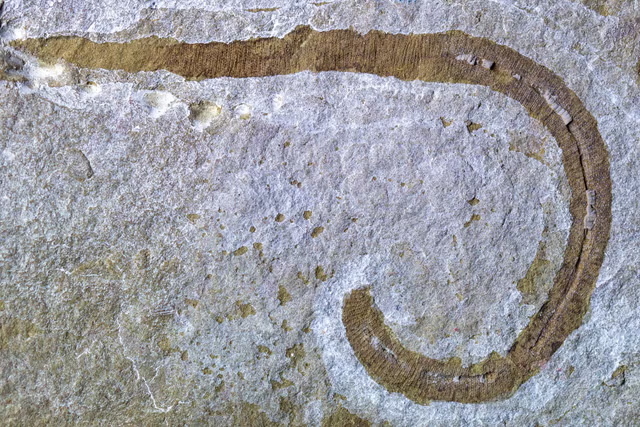An "astonishing" collection of historic graffiti made by soldiers in the 18th and 19th centuries has been discovered on the door of a castle in England.
The door features around 50 examples of carved graffiti, including nine depictions of hangings, a detailed illustration of a sailing ship and numerous sets of initials.
The carvings were discovered by historian Paul Pattison with English Heritage—a charity that manages historic monuments and sites in England—at Dover Castle. The medieval castle is located on the country's southeast coast in the county of Kent.
"The door was originally located in an area at the top of St. John's Tower at Dover Castle, and for more than a century had been impossible to access without climbing a ladder to the base of a spiral staircase," a spokesperson for English Heritage told Newsweek. "It was also covered in thick layers of paint which obscured the graffiti."
And it wasn't until historian Paul Pattison climbed a ladder and examined it in more detail that the graffiti were discovered.
After the discovery, the door was removed from the tower in order to protect and preserve it. Experts then carefully removed layers of paint, before cleaning and treating the wood.
"Careful removal of the paint has also shown the true extent of the graffiti," the spokesperson said.
The history of Dover Castle stretches back around a thousand years—a fortification was established at the site in the 11th century, although there are no surviving remains of this structure.
Construction of the structure that is visible today began in the 1180s, though the castle was modified several times over the subsequent centuries in order to adapt to the changing nature of the threats the country faced.
One of these transformations occurred in the 1790s when there was a palpable threat coming from France during the Revolutionary and later Napoleonic Wars (1792-1815). In this period, the aging medieval castle was remodeled into a modern military garrison.
"Housing thousands of soldiers, it was necessary to build new barracks, as well as create new positions to defend from cannon fire and to bombproof the defenses," the spokesperson said.
St. John's Tower would have once been guarded by six to 12 men at any given time. The graffiti on the door would likely have been made by these men using knives, or possibly bayonets.
The examples of graffiti are thought to date from 1789 until 1855 and come in several different forms. Some of the carvings are dates, such as 1789, when the French Revolution began. There are also nine gruesome illustrations of hangings, including an example that may have been a depiction of one that took place at the castle, or even an imagined execution of Napoleon himself.
Among the other examples is a detailed and accurate carving of a single-masted sailing vessel, several sets of initials, two surnames, and a mysterious symbol consisting of a glass or chalice and a cross—perhaps a reference to the Christian holy communion.
"Scaling a ladder to the upper floor of St John's Tower and seeing these remarkable carvings on the door was an astonishing discovery," Pattison said in a press release. "This graffiti gives a unique glimpse into the minds of these soldiers, especially during such a charged period of time. As a result of the impending threat of war from across the Channel, Dover was a hive of activity with ships filling the harbor and colourful military uniforms a constant presence in the castle and town."
"What makes this door such an extraordinary object is that it is a rare and precious example of the ordinary person making their mark; whether that be simply for the purpose of killing time or wanting to be remembered."
Do you have a tip on a science story that Newsweek should be covering? Do you have a question about archaeology? Let us know via science@newsweek.com.
Disclaimer: The copyright of this article belongs to the original author. Reposting this article is solely for the purpose of information dissemination and does not constitute any investment advice. If there is any infringement, please contact us immediately. We will make corrections or deletions as necessary. Thank you.



